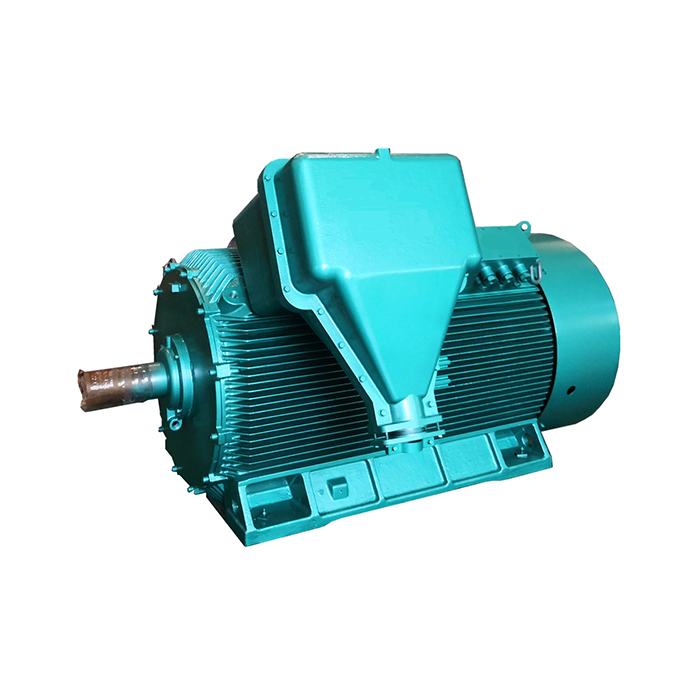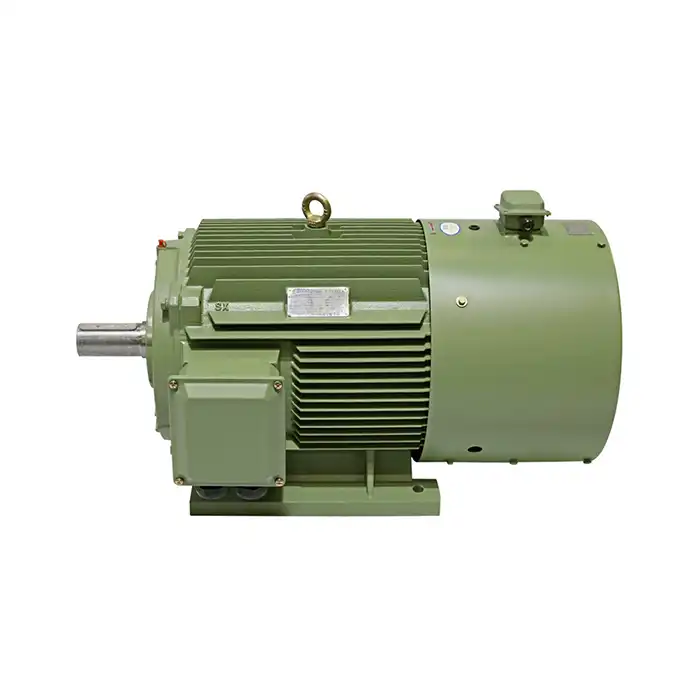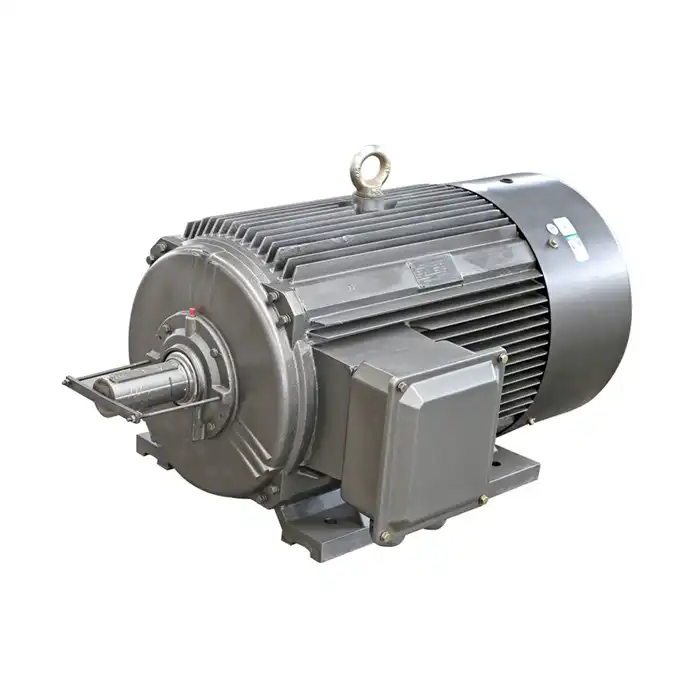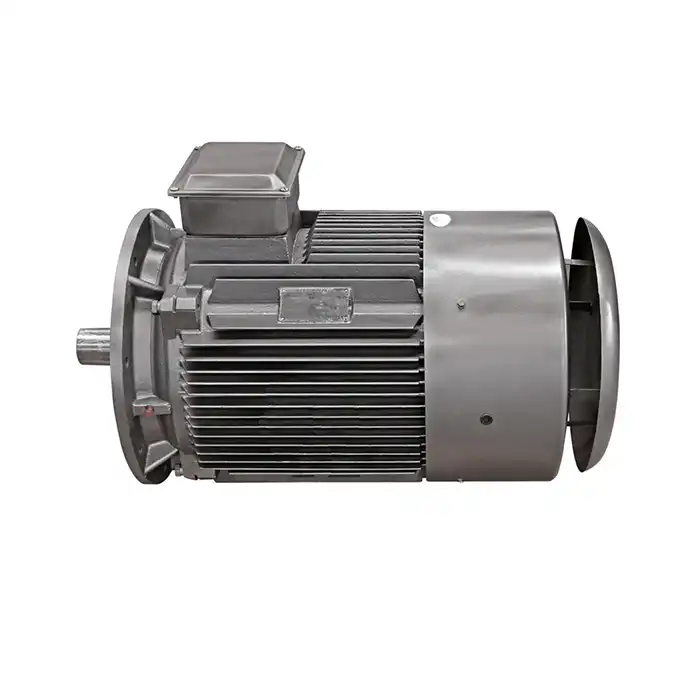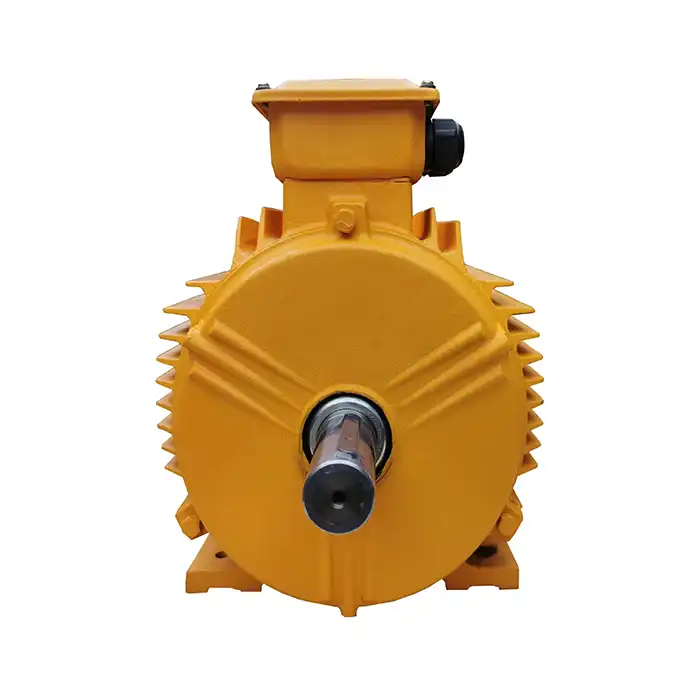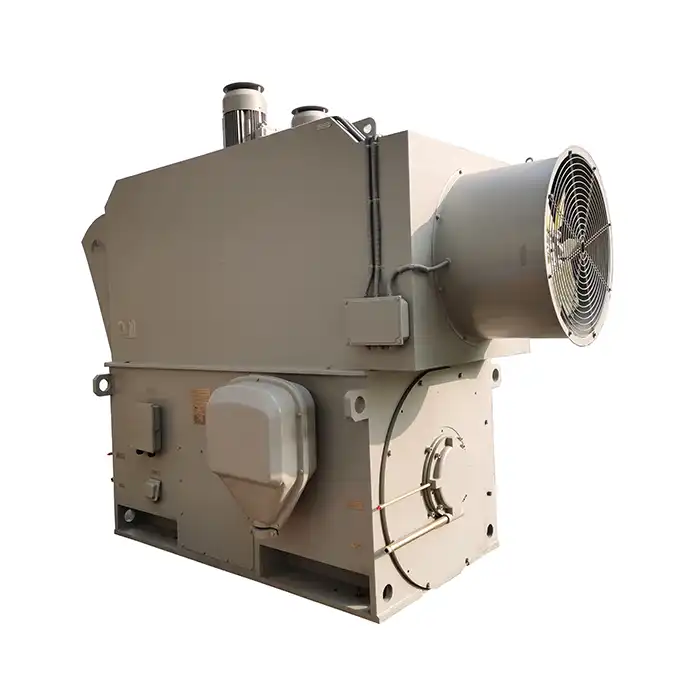How to Select the Right IEC Low Voltage Motor for Your Project?
Choosing the appropriate IEC low voltage motor for your project is a critical decision that can significantly impact the efficiency, performance, and longevity of your equipment. Whether you're in manufacturing, process control, or HVAC systems, understanding the key factors in motor selection is essential. This comprehensive guide will walk you through the crucial aspects to consider when selecting an IEC low voltage motor, ensuring you make an informed decision that aligns with your project requirements.
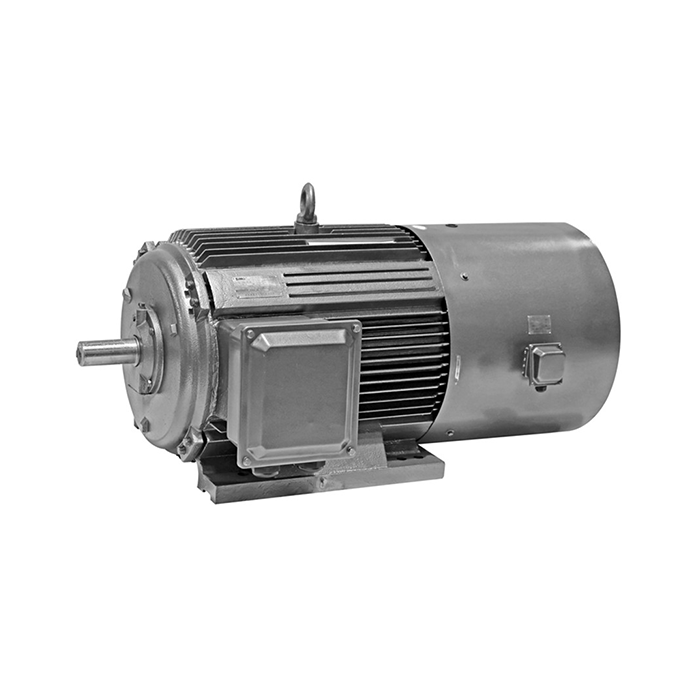
Series:YVFE4
Frequency conversion range:30hz~50hz,5hz~70hz,5hz~100hz
Power range:0.75-1000kW
Protection level:IP55
Application:are suitable for driving various mechanical equipment that require continuous and frequent forward and reverse rotation, such as steel rolling, lifting, transportation, machine tools, printing and dyeing, papermaking, chemicals, textiles, pharmaceuticals, etc., and can be used with various domestic and foreign variable frequency power supplies.
Advantage:high efficiency, wide speed range, high precision, stable operation, and easy operation and maintenance.
Certificate:installation dimensions comply with International Electrotechnical Commission (IEC) standards.
Others: SKF, NSK, FAG bearings can be replaced according to customer requirements.
Assessing Power Requirements: Matching Motor to Load
The first step in selecting the right IEC low voltage motor is to accurately assess your power requirements. This involves a thorough analysis of the load characteristics and operating conditions of your application.
Understanding Load Characteristics
Load characteristics play a vital role in determining the appropriate motor size and type. Consider the following factors:
1. Starting torque requirements
2. Running torque profile
3. Speed range
4. Duty cycle
5. Load inertia
Calculating Power Needs
To determine the required motor power, you'll need to:
1. Measure the mechanical power output needed
2. Account for system inefficiencies
3. Consider any potential future capacity increases
Voltage and Frequency Considerations
IEC low voltage motors are designed to operate within specific voltage and frequency ranges. Typically, the voltage range is between 220V and 690V, while the frequency range is usually between 30Hz and 50Hz. Some models, however, can handle frequencies ranging from 5Hz to 100Hz. It is important to ensure that the motor you select is compatible with your power supply to guarantee optimal performance.
Speed Requirements
Determine whether your application requires constant speed operation, variable speed operation, or precise speed control. For applications that require variable speed, it is advisable to consider motors designed for use with variable frequency drives (VFDs) to ensure optimal performance and control.
Environmental Considerations: IP Ratings Explained
The operating environment plays a crucial role in motor selection. IEC low voltage motors come with different levels of protection against environmental factors, indicated by their IP (Ingress Protection) ratings.
Understanding IP Ratings
IP ratings consist of two digits:
1. The first digit (0-6) indicates protection against solid objects
2. The second digit (0-8) indicates protection against liquids
Common IP Ratings for IEC Low Voltage Motors
1. IP55: Protected against dust and water jets
2. IP56: Protected against dust and powerful water jets
3. IP65: Dust-tight and protected against water jets
Selecting the Appropriate IP Rating
Consider the following environmental factors:
1. Presence of dust or other particulates
2. Exposure to water or other liquids
3. Ambient temperature and humidity
4. Presence of corrosive substances
5. Altitude of installation
Special Environmental Considerations
For extreme environments, you may need to consider specialized motors, such as explosion-proof motors for hazardous locations, severe-duty motors for harsh industrial settings, and washdown-duty motors for the food and beverage industries. These motors are designed to withstand challenging conditions, ensuring safety, durability, and reliable performance in demanding applications where standard motors might fail.
Efficiency Classes: Balancing Performance and Cost
Energy efficiency is a crucial factor in motor selection, impacting both operating costs and environmental footprint. IEC low voltage motors are classified into efficiency classes, with higher classes offering improved efficiency at a higher initial cost.
Efficiency Factors Influencing Efficiency
Several factors contribute to a motor's efficiency:
1. Motor design and construction
2. Materials used (e.g., copper windings, high-grade electrical steel)
3. Operating conditions (load, speed, temperature)
4. Motor size and power rating
Evaluating Life-Cycle Costs
When selecting an efficiency class, consider:
1. Initial purchase cost
2. Energy costs over the motor's lifetime
3. Maintenance requirements
4. Potential energy savings and payback period
Regulatory Considerations
Be aware of local regulations regarding minimum efficiency standards for electric motors. Many regions have adopted mandatory minimum efficiency levels for newly installed motors.
Additional Performance Factors
While efficiency is important, also consider:
Matching Motor to Application
Different applications may benefit from different efficiency classes:
1. Continuous duty applications: Higher efficiency classes often justified
2. Intermittent duty applications: Lower efficiency classes may be more cost-effective
3. Variable speed applications: Consider system efficiency, including drive losses
Frame Size and Mounting Considerations
IEC low voltage motors come in standardized frame sizes, which define their physical dimensions and mounting arrangements. When selecting a motor, ensure that:
1. The frame size is compatible with your existing equipment or space constraints
2. The mounting type (foot-mounted, flange-mounted, or combination) suits your application
3. The shaft height and diameter are appropriate for your coupling or load connection
Bearing Selection and Lubrication
Proper bearing selection is crucial for motor longevity and reliability. Consider:
1. Load type (radial, axial, or combined)
2. Operating speed
3. Environmental conditions
4. Lubrication requirements (grease or oil)
5. Bearing life expectations
Insulation Class and Temperature Rise
The insulation class determines the motor's ability to withstand temperature increases. Common insulation classes include:
1. Class B: Maximum temperature rise of 80°C
2. Class F: Maximum temperature rise of 105°C
3. Class H: Maximum temperature rise of 125°C
Select an insulation class that can handle your application's temperature requirements, considering both ambient temperature and motor temperature rise under load.
Motor Documentation and Certification
Ensure that the motor you select comes with:
1. Complete technical documentation
2. Test reports
3. Relevant certifications (e.g., CE marking)
4. Warranty information
Supplier Considerations
When selecting an IEC low voltage motor, also consider the motor supplier:
1. Reputation and experience in the industry
2. Technical support and after-sales service
3. Availability of spare parts
4. Lead times and delivery capabilities
5. Customization options if standard motors don't meet your requirements
By carefully considering these factors, you can select an IEC low voltage motor that not only meets your immediate project requirements but also provides long-term reliability and efficiency.
Conclusion
Remember that motor selection often involves trade-offs between performance, cost, and other factors, so prioritize the characteristics most critical to your application. Selecting the right IEC low voltage motor for your project requires careful consideration of power requirements, environmental factors, and efficiency classes. By thoroughly assessing these aspects, you can ensure that your chosen motor will provide optimal performance, reliability, and energy efficiency for your specific application.
Ready to find the perfect IEC low voltage motor for your project? At XCMOTOR, we specialize in providing high-efficiency, low-energy consumption power equipment solutions for a wide range of industries, including manufacturing, process control, HVAC, renewable energy, and more. Our team of experts is ready to assist you in selecting the ideal motor that meets your specific requirements and helps you achieve stable, efficient operations. Whether you're in industrial automation, energy and utilities, or any other sector requiring reliable motor solutions, we're here to help. Don't hesitate to reach out to us for pre-sales consultation, technical support, or any questions you may have about our IEC low voltage motors. Contact us today at xcmotors@163.com to get started on optimizing your power equipment solution.
References
1. Johnson, A. (2023). "Comprehensive Guide to IEC Low Voltage Motor Selection". Industrial Motor Systems Quarterly, 45(2), 78-92.
2. Smith, B., & Davis, C. (2022). "Energy Efficiency in Industrial Motors: A Comparative Study of IEC Efficiency Classes". Journal of Power Electronics, 18(4), 1205-1220.
3. Zhang, L., et al. (2024). "Environmental Considerations in Electric Motor Design: IP Ratings and Beyond". IEEE Transactions on Industry Applications, 60(1), 325-337.
4. Brown, R. (2023). "Load Characteristics and Their Impact on Motor Selection: A Practical Approach". Proceedings of the International Conference on Electric Machines, 112-125.
5. Miller, T., & Wilson, E. (2022). "Life-Cycle Cost Analysis of Premium Efficiency Motors in Industrial Applications". Energy Policy Review, 33(6), 789-803.
6. Thompson, K. (2024). "Advancements in IEC Low Voltage Motor Technology: A Review of Recent Innovations". Electric Power Components and Systems, 52(3), 412-428.



